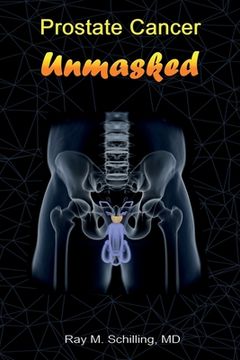Compartir
Prostate Cancer Unmasked (en Inglés)
Ray M. Schilling
(Autor)
·
Createspace Independent Publishing Platform
· Tapa Blanda
Prostate Cancer Unmasked (en Inglés) - Schilling, Ray M.
$ 26.84
$ 37.28
Ahorras: $ 10.44
Elige la lista en la que quieres agregar tu producto o crea una nueva lista
✓ Producto agregado correctamente a la lista de deseos.
Ir a Mis Listas
Origen: Estados Unidos
(Costos de importación incluídos en el precio)
Se enviará desde nuestra bodega entre el
Viernes 19 de Julio y el
Viernes 26 de Julio.
Lo recibirás en cualquier lugar de Internacional entre 1 y 3 días hábiles luego del envío.
Reseña del libro "Prostate Cancer Unmasked (en Inglés)"
The FDA approved the PSA test in 1986 as a "monitor for treatment response and disease recurrence". Later in 1994 the FDA approved the PSA test as a screening tool for prostate cancer. But the question remained: what was the best treatment tool? I am reviewing 9 different treatment approaches in this book. They are all currently in use by different physicians. But they do not necessarily serve the patient best. Brachytherapy does not quite do it. It improves the cancer for a period of time, and after a few years it returns with a vengeance. The radical prostatectomy and the robotic prostatectomy have helped a significant amount of patients. But long-term studies show that there can be a recurrence rate of as much as 25 to 30%. In addition there are significant side effects like a killed sex life and involuntary dribbling of urine, if the bladder outlet was injured during the surgery. Quite often urologists recommend "active surveillance". This approach to prostate cancer means that a 71 to 75 year old prostate cancer sufferer is kept in suspense by the urologist. An initial rectal biopsy is done with a histology assessment where a Gleason score is analyzed. If this score is 6 or less, the cancer is presumed to be less aggressive and active surveillance is done. Another biopsy is done 1 year later and this could go on until the patient dies of a heart attack or a stroke. I think that prostate cancer should be treated early before metastases develop and the cancer gets out of control. There are other methods that actually can get rid of the prostate cancer, for instance cryoablation therapy following a mapping biopsy. In this latter method 60 biopsies are placed like a grid through the entire prostate gland to identify the exact location where prostate cancer has developed. This is done through the perineum (between the scrotum and the anal opening). Prostate cancer can often be multifocal: there may be two or three areas where prostate cancer is located. One month after the mapping procedure probes are introduced in the same way, through the perineum and the identified cancer lesions are treated with cryotherapy twice. I am explaining this in chapter 15 in more detail. According to Dr. Onik, an interventional radiologist in Ft. Lauderdale, active surveillance is something that should be abandoned. Instead the following treatment approach should be adopted. 1. A rising PSA or single PSA above 30 should trigger a referral for a mapping biopsy through the perineal approach under a general anesthetic. The treating physician can sterilize the area and perform biopsies in a sterile fashion, which prevents infection. This is a huge advantage above the standard transrectal approach, which can lead to infections like prostatitis and blood poisoning. 2. Based on the result of the mapping biopsy targeted ablation cryotherapy is performed one month later eradicating all the cancer foci determined through the mapping biopsy. 3. Follow-up PSA levels are obtained every three months for 2 years. If the PSA is less than 3.0, the patient is considered cured. If there is a rising PSA level point 1 and 2 above are repeated until a cure is achieved. Dr. Gary Onik published a 10-year follow-up study that had a 100% survival rate and a 94% cure rate in 70 men with prostate cancer. The reason for such good results is that attention is paid to detail, to the exact location of the cancer and that all cancer is completely eradicated. In my opinion this is the new blueprint of a common sense approach to prostate cancer. Read more details about this in chapter 15. Apart from the above mentioned treatment methods I reviewed external beam radiotherapy, laser ablation therapy and high-intensity focused ultrasound treatment. I noticed that the long-term cure rates over 10 years differ considerably from one treatment modality to the next. All of this is reviewed in detail in this book.
- 0% (0)
- 0% (0)
- 0% (0)
- 0% (0)
- 0% (0)
Todos los libros de nuestro catálogo son Originales.
El libro está escrito en Inglés.
La encuadernación de esta edición es Tapa Blanda.
✓ Producto agregado correctamente al carro, Ir a Pagar.

